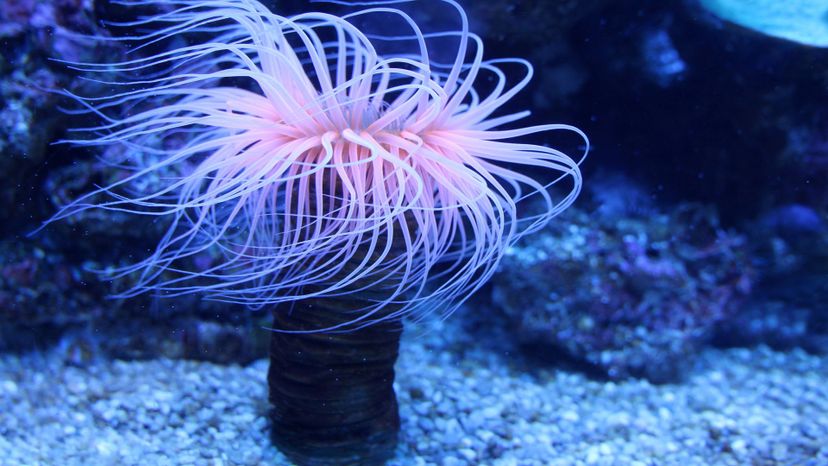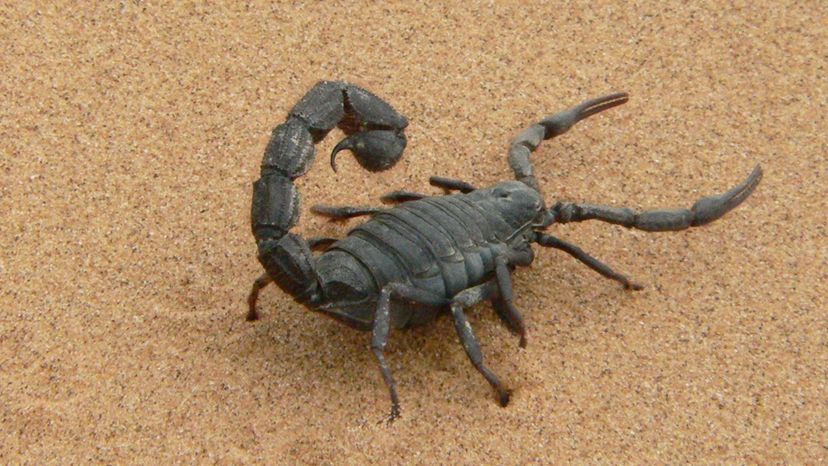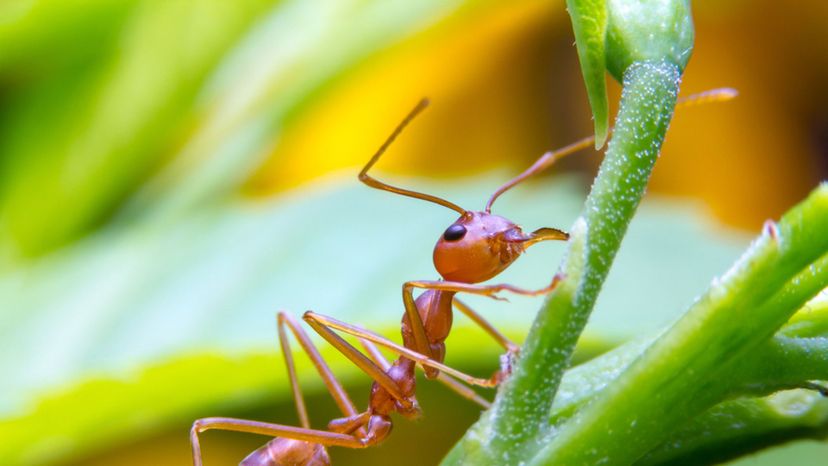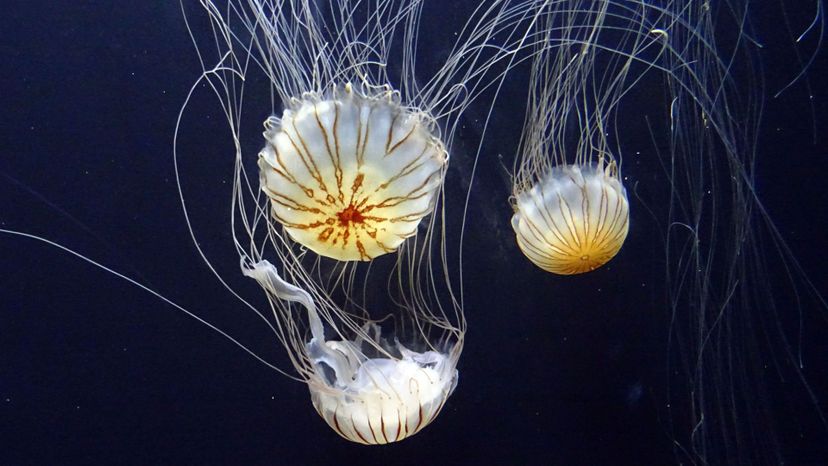
About This Quiz
Can you file these animals away into their correct phylum?
The term phylum refers to a biological grouping of organisms that is ranked above "class" and below "kingdom." Phyla lie relatively high up in the sequence of eight taxonomic ranks, which are in order from highest to lowest: domain, kingdom, phylum, class, order, family, genus, and species. As a result of this, the array in which organisms are found in each phylum is oftentimes very diverse when it comes to things like their habitats, their physical features, and more. An example of this can be seen if we take into consideration animals like the blue whale, the cheetah, the ostrich, and humans. While this handful of animals may seem random at first glance, they actually all belong to the same phylum.
In this scientifically stimulating quiz, we've taken an assortment of some of the most notable animals from around the world and put them all in one place to see if you can manage to correctly match them to their phylum. Let's jump right in and see if you've got the brains to beat this quiz!

The Bengal tiger is one of the largest cats and it belongs to the phylum Chordata. Its natural habitat is the Indian subcontinent and it is considered to be endangered, with its population being just in the thousands.

The Queen Alexandra's birdwing that is shown here is a species of butterfly that is classified into the phylum Arthropoda. It is notable for being the largest butterfly in the world.

This is the yellow tube sponge, a species of sponge that is a member of the phylum Porifera. It is notably fond in the Gulf of Mexico and the Caribbean Sea.
Advertisement

The ostrich is a flightless bird that belongs to the phylum Chordata. While it cannot fly, the ostrich is notable for being the largest living bird species.

The leech that is shown here is a worm-like animal that is classified into the phylum Annelida. They are notable for their medicinal uses throughout history.

This is the saltwater crocodile, a predatory reptile that is a member of the phylum Chordata. It is notable for being the largest living reptile in the world.
Advertisement

The tarantula hawk is a large wasp that belongs to the phylum Arthropoda. They are one of the largest wasps in the world and as their name suggests, they are famous for hunting tarantulas.

The Goliath beetle that is shown here is an insect that is classified into the phylum Arthropoda. They are one of the largest insects and are named after the biblical giant, Goliath.

This is the African bush elephant, a mammal that is a member of the phylum Chordata. Not only is it the largest species of elephant but it is also the largest land animal that is alive today.
Advertisement

The lion's mane jellyfish is a species of jellyfish that belongs to the phylum Cnidaria. It is primarily found in cold waters and is notable for being the largest jellyfish.

The blue whale that is shown here is a marine mammal that is classified into the phylum Chordata. It is not only the largest living animal but it is also considered to be the largest animal that has ever existed.

This is the staghorn coral, a type of stony coral that is a member of the phylum Cnidaria. It is notable for being one of the most important types of coral in the Great Barrier Reef.
Advertisement

The giant forest scorpion is the largest species of scorpion and it belongs to the phylum Arthropoda. However, it is not incredibly venomous, instead primarily killing its prey with its pincers.

The ragworm that is shown here is a part of a large family of worms that is classified into the phylum Annelida. They are often used as bait or as fish feed.

This is the fire ant, a small insect that is a member of the phylum Arthropoda. As their name suggests, they are most notable for their painful sting.
Advertisement

The cuttlefish is a marine animal that belongs to the phylum Mollusca. They are a delicacy in East Asia and parts of the Mediterranean.

The American lobster that is shown here is a species of lobster that is classified into the phylum Arthropoda. It is notable for being the heaviest member of its phylum.

This is the giant African snail, a land snail that is a member of the phylum Mollusca. It is one of the largest land snail species in the world.
Advertisement

The earthworm is a tube-shaped invertebrate that belongs to the phylum Annelida. They are "blind†in the traditional sense, with no eyes but instead having specialized photosensitive cells.

The octopus that is shown here is an eight-limbed animal that is classified into the phylum Mollusca. While their appearance may be deceiving, octopuses are actually extremely intelligent, being one of the smartest animals that are alive today.

This is the brain coral, an aquatic animal that is a member of the phylum Cnidaria. It gets its name from the distinct series of ridges on its surface that give it the appearance of an actual brain.
Advertisement

The tarantula is a family of large spiders that belongs to the phylum Arthropoda. They are notable for being skilled hunters and they are often kept as exotic pets.

The stove-pipe sponge that is shown here is a marine animal that is classified into the phylum Porifera. They can primarily be found in areas of the Western Atlantic Ocean.

This is the garden snail, a species of land snail that is a member of the phylum Mollusca. They are relatively common and often regarded as an agricultural pest.
Advertisement

The stalked jellyfish is a cold-water loving creature that belongs to the phylum Cnidaria. They are notable for actually being the only members of the class Staurozoa that are alive today.

The Australian trumpet that is shown here is a large sea snail that is classified into the phylum Mollusca. Their large shells are highly sought after by collectors.

This is the sea cucumber, a marine animal that is a member of the phylum Echinodermata. The name comes from their close resemblance to the fruit of the cucumber plant.
Advertisement

The sea urchin is a spine aquatic animal that belongs to the phylum Echinodermata. They are notable for being found at a wide range of depths throughout the ocean.

The Portuguese man o' war that is shown here is a marine animal that is classified into the phylum Cnidaria. Each year, they sting more than 10,000 people in Australian waters alone.

This is the pink vase sponge, a species of demosponge that is a member of the phylum Porifera. While their name suggests one specific color, they can be found in the wild as gray, blue, and any shade between purple and pink.
Advertisement

The coconut crab is a species of land dwelling crab that belongs to the phylum Arthropoda. It is notable for actually being the largest land dwelling member of its phylum.

The cheetah that is shown here is a slender big cat that is classified into the phylum Chordata. It is notable for holding the title of "fastest land animal."

This is the sea anemone, a marine animal that is a member of the phylum Cnidaria. Their name is derived from the anemone, a flowering plant that is also notable for its varied colorful appearance.
Advertisement

Humans are a species of mammals that belongs to the phylum Chordata. The most intelligent species of animal in the world; the only ones to rely heavily on complex tools and form intricate multifaceted societies.

The sea lily that is shown here is a marine animal that is classified into the phylum Echinodermata. The name "sea lily†is primarily used to refer to the adult form of the organism.

This is the coyote, a canine that is a member of the phylum Chordata. They are notable for currently only being native to the North American continent.
Advertisement

The starfish is a marine animal that belongs to the phylum Echinodermata. While there are commonly depicted as having five "limbs†or "arms,†there are several species of starfish that have more.

The sea wasp that is shown here is a marine animal that is classified into the phylum Cnidaria. This species of jellyfish is extremely venomous, being responsible for dozens of known deaths over the years.

This is the dragon eye zoanthid, a marine animal that is a member of the phylum Cnidaria. They are popular among aquarium owners and fishkeepers, due to their attractive coloration.
Advertisement

The colossal squid is a marine animal that belongs to the phylum Mollusca. It is not only the largest species of squid but also the largest known invertebrate.